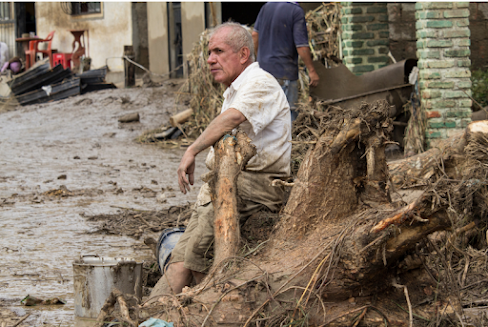Floods in the USA: a formidable natural occurrence that has left communities grappling with devastation and rebuilding. This blog will dive into the dynamics of floods in the United States, exploring their root causes, far-reaching consequences, and proactive strategies that can bolster community resilience. As we unravel the complexities of floods, we shed light on how understanding, preparation, and cooperation can make a significant difference in mitigating their impact.
Causes of Floods in the USA:
Floods in the USA are often triggered by a combination of factors, including heavy rainfall, rapid snowmelt, and coastal storms. These elements can overwhelm drainage systems, rivers, and coastal areas, resulting in overflowing water that inundates homes, businesses, and infrastructure. With the backdrop of climate change, rising temperatures intensify rainfall, making floods an increasingly pressing concern.
Impacts on Communities:
The consequences of floods are far-reaching, disrupting daily life and leaving behind a trail of destruction. Families are displaced, businesses shuttered, and vital infrastructure compromised. The aftermath brings not only economic strains but also emotional stress, as communities grapple with recovery and rebuilding. Understanding the toll on mental health and well-being is crucial for comprehensive flood management.
Climate Change and Flood Risk:
Climate change adds a sobering layer to the flood equation. As global temperatures rise, so do concerns about more frequent and severe floods. With a focus on reducing greenhouse gas emissions and embracing sustainable practices, the USA can play a pivotal role in mitigating the impact of climate change on flood risk.
Resilience Strategies:
Building resilience against floods requires a multi-faceted approach. Communities can adopt measures such as elevating homes, designing flood-resistant infrastructure, and creating robust evacuation plans. Floodplain management, early warning systems, and public awareness campaigns play essential roles in empowering individuals and safeguarding neighborhoods.
Flood Insurance and Recovery Process:
Navigating the aftermath of a flood necessitates understanding the role of flood insurance and disaster recovery programs. From filing claims to accessing government aid, a well-informed approach can expedite recovery and expedite rebuilding efforts.
International Collaboration and Knowledge Sharing:
Floods transcend borders, making international cooperation crucial. By sharing insights, best practices, and technological innovations, nations can collectively enhance flood preparedness and response strategies. Cross-border data sharing, early warning systems, and joint research initiatives contribute to a more resilient global approach.
Conclusion:
Floods in the USA demand a comprehensive understanding of their causes, impacts, and management strategies. As we navigate an evolving climate landscape, collaboration, preparation, and education are vital components of a proactive approach. By adopting resilient practices, harnessing technological advancements, and fostering international partnerships, the USA can pave the way for a safer and more secure future, where communities stand strong in the face of floods' formidable forces.



No comments:
New comments are not allowed.